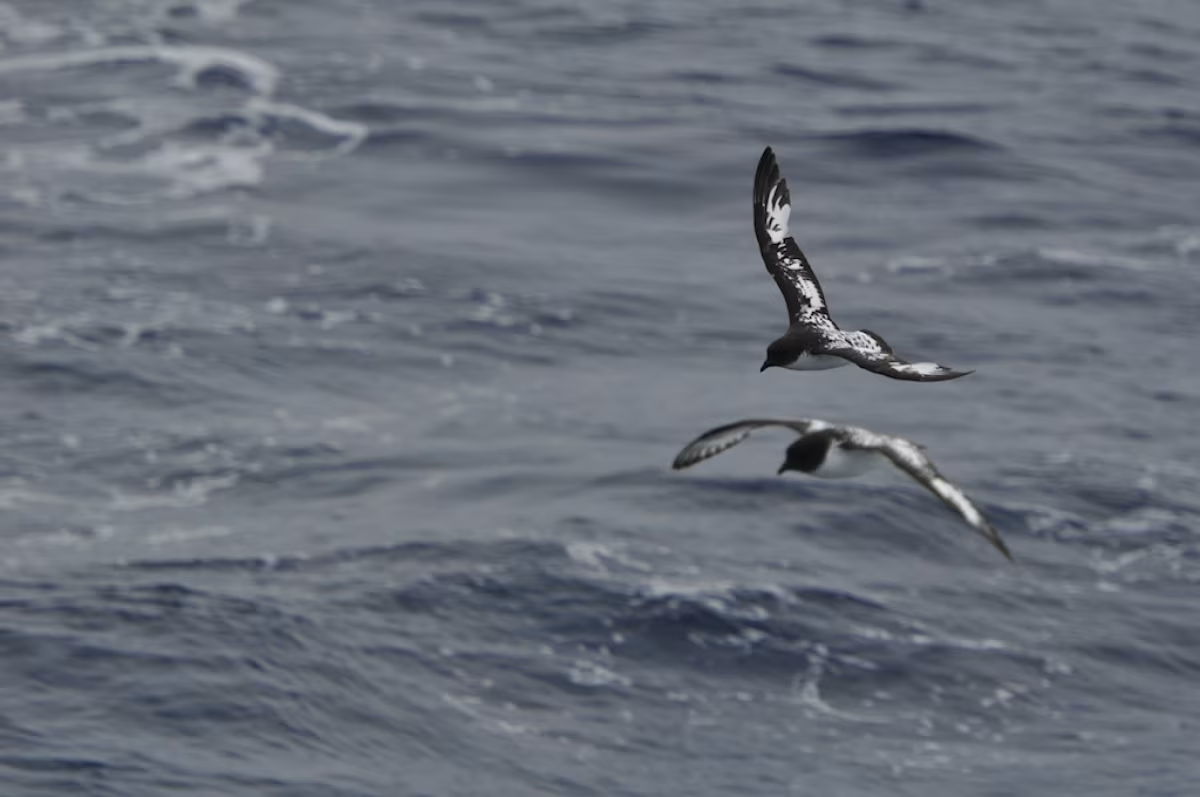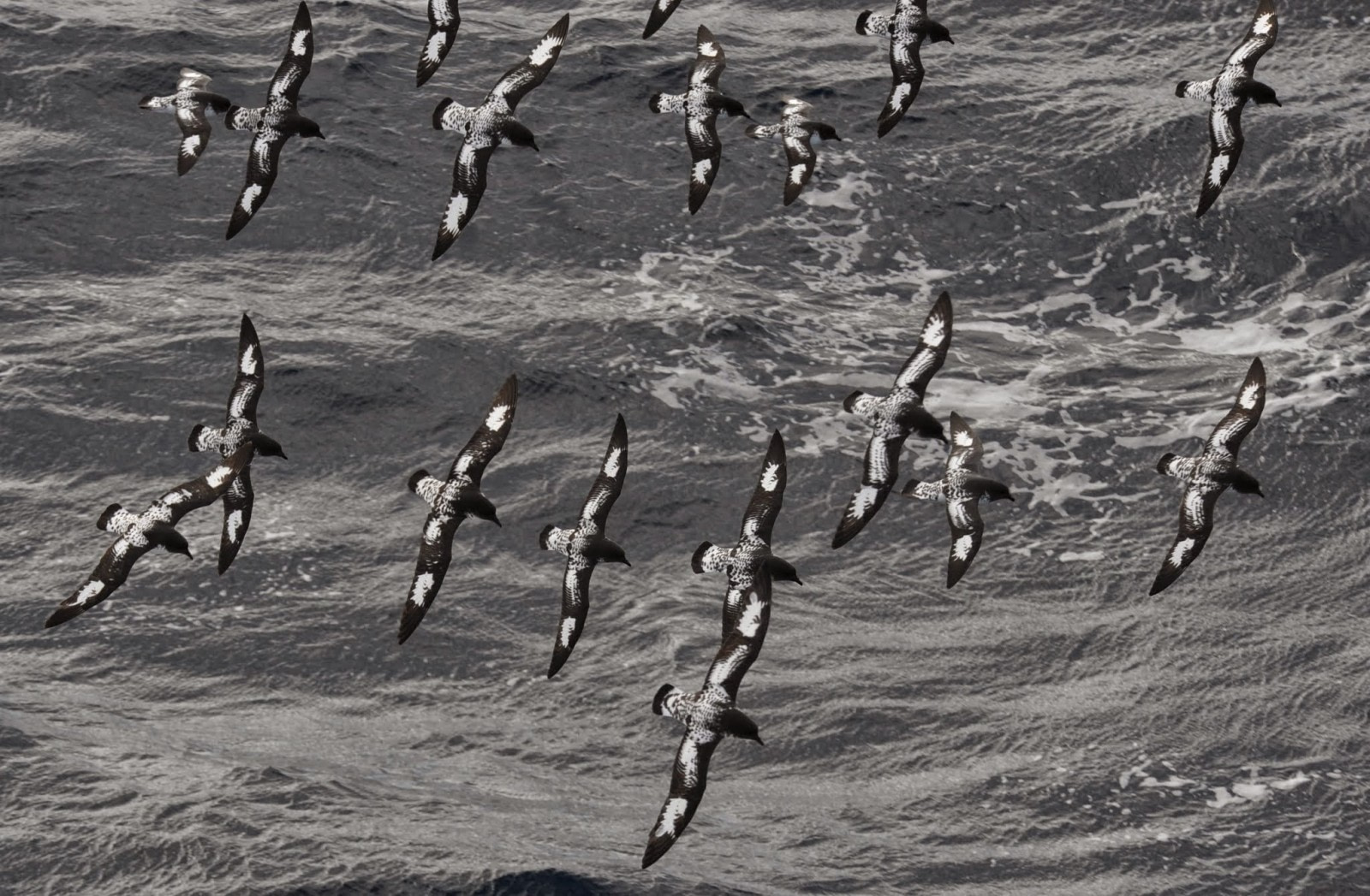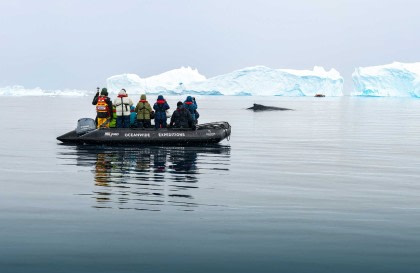Name: Pintado Petrel (Daption capense)
Length: 40 cm.
Weight: 450 to 480 grams.
Location: Subantarctic islands.
Conservation status: Least Concern.
Diet: Crustaceans, squid, fish.
Appearance: Black head, bill, and forewings. White patches on wings. Dappled white and black back and inner upper wings with black feather tips on wings and tail. White undersides.
How do Pintado Petrels feed?
Pintado Petrels do a lot of their feeding by swimming and pecking at the water to catch krill. They also occasionally dive to strain krill out from the water. In addition they are also one of the species of birds known to follow fishing vessels in order to nab fish waste that is thrown overboard.
Pintado Petrels become quite aggressive while competing for food and will spray their foul-smelling stomach oil at competitors in an attempt to drive them off, even if that competition is other members of their own species.
Are Pintado Petrels social?
Pintado Petrels form large flocks while foraging at sea. They form loose colonies at land during the breeding season where they are quite competitive for prime nest spots.
How fast do Pintado Petrels fly?
Pintado Petrels fly at around 18 metres per second.
What are Pintado Petrel birthing rituals like?
Pintado Petrels reach sexual maturity at 5 years of age.
Pintado Petrels migrate to their colony sites around the middle of October. The colonies nest on cliffs or on the level ground usually within a kilometre from the coastline. The nests are created with pebbles and are located under overhanging rock projections which are used as protection from the elements.
The majority of the mating pairs are monogamous and will mate with their partner from the previous season. A single egg is laid in November. Both parents take turns incubating the egg for the next 45 days.
Once the egg is hatched the parents will switch off caring for the chick and going off to feed, bringing back nourishment for the hatchling in the form of regurgitation.
The chicks fledge around 45 days after hatching.

How long do Pintado Petrels live?
Pintado Petrels live for about 25 years.
How many Pintado Petrels are there today?
The Pintado Petrel population is estimated at around 2,000,000 individuals worldwide.
Do Pintado Petrels have any natural predators?
Skuas are predators of the Pintado Petrels’ eggs and hatchlings.
7 Captivating Pintado Petrels Facts
- Pintado Petrels are the only member of the Daption genus.
- Pintado Petrels share a feature with other members of the Procellariidae family – they create oil kept in a section of their stomachs called the proventriculus. The oil can be used as a source of nourishment on long flights, regurgitated to feed their young, or it can be used as a defensive measure to be sprayed at predators.
- Another feature shared amongst Procellariidae family members is a gland located above the nasal passages that secretes a saline solution to rid excess salt ingested when feeding in salty ocean waters.
- Pintado Petrels have two subspecies:
1. Daption capense australe – subantarctic islands near New Zealand.
2. Daption capense capense – subantarctic islands worldwide aside from those found near New Zealand - “Daption” comes from an ancient Greek word that means “little devourer”. “Pintado” is a Spanish word for “painted”.
- The “Cape Pigeon” alternative name comes from the bird’s habit of pecking at water while it eats. The “Cape” in the alternative name “Cape Petrel” refers to the Cape of Good Hope where they were first identified.
- Pintado Petrels are the only kind of marine bird with its distinct dappled colouring.








